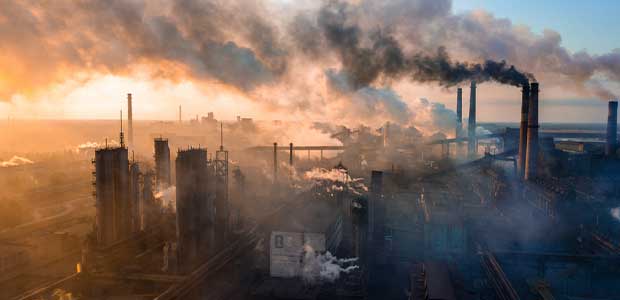
The 7 Biggest Polluters by Industry in 2022, as Ranked in New Research
The Eco Experts ranked the Industries their yearly greenhouse gas emission output.
- By Beth Howell
- Oct 17, 2022
As the world continues towards irreversible climate change and the direct causation of cancer from air pollution is uncovered, it’s clear that more must be done by global industries to lower their pollution output.
To highlight the largest global greenhouse gas emission (GHG) sources, The Eco Experts have researched and relaunched their rankings of the seven biggest polluters by industry for 2022.
Here's are the top seven polluters by industry and their GHG emissions per year:
1. Energy (Electricity and Heating): 15.83 billion tons
2. Transport: 8.43 billion tons
3. Manufacturing and construction: 6.3 billion tons
4. Agriculture: 5.79 billion tons
5. Food retail: 3.1 billion tons
6. Fashion: 2.1 billion tons
7. Technology: 1.02 billion tons
The energy, transport and manufacturing/construction industries make up the top three positions, respectively, and have a combined output of 30.56 billion tons of GHG yearly.
Despite the advancements and usage of renewable energy technology, fossil fuels are still the dominant source of energy and fuel. Energy is still by far the industry that produces the most pollution, at a rate of more than 15 billion tons due to its dependency on coal, oil and gas.
Although electric vehicles were purchased in record numbers the last year, petrol vehicles are still the prominent transportation method, accounting for 74.5 percent of the Transport Industries' CO2 emissions.
Shockingly, manufacturing and construction is responsible for 50 percent of all natural resource extraction worldwide.It's consumption accounts for one-sixth of global freshwater, one-quarter of wood, and one-quarter of global waste. The industry's practices need to be more sustainable, especially in regards to material sourcing and wastage.
The workings of the food industry—comprising agriculture and food retail—means that they follow in the rankings (fourth and fifth) with a combined total of 8.89 billion tons.
The retail industry—food retail, fashion and technology—make up positions five, six and seven, respectively, with a combined amount of 6.22 billion tons.
Looking back over the past few years can feel a bit overwhelming. Countries around the world have declared a climate emergency, plastic pollution is at an all-time high, we’ve seen the hottest years on record, and more animals have reached extinction. Ultimately, we’ve seen the impact of our consumerism skyrocket to new levels—which is reflected by this year's industry rankings.
Although this paints quite a bleak picture, it’s not all bad. The past decade has also seen much of the world wake up to climate change—with some governments making active efforts to lower their emissions. We’ve seen an ever-growing use of renewable energy, climate strikes beyond belief, and the lowest use of coal in some countries since records began.
If a handful of industries adopt more sustainable practices, global emissions will decrease and we might be able to limit global warming to 1.5 degrees Celsius.
See The Eco Experts report here with more key insights. It also includes a "What Can You Do To Help?" section for each entry offering practical advice to lower consumer dependence on these industries.
The Methodology
There are five main types of pollution troubling our planet: air, water, soil, light, and noise. Out of these, air pollution, water pollution, and soil pollution pose the biggest threat.
In 2021, air pollution contributed to 8.7 million deaths globally. When it comes to water pollution, 14 billion pounds of plastics are dumped into the ocean each year, with polluted bodies of water contributing to 1.5 million children’s deaths. As for soil pollution? About 400 million tons of hazardous waste are generated globally every year, which seep into our soil.
That’s why this report focuses on how industries are contributing to these three types of pollution. We’ve also decided to order the industries based on how much they contribute to global greenhouse gas (GHG) emissions.
About the Author
Beth Howell has a real passion for green living. She’s been absorbed in eco research for over three years, and has become quite the expert. Whether you’re after a new set of solar panels, a home energy improvement, or you want to catch the latest eco news, she’s got your back.